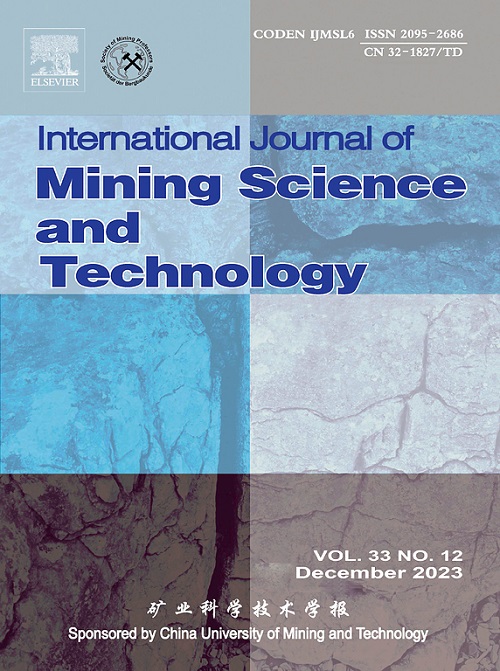Machine learning applications on lunar meteorite minerals: From classification to mechanical properties prediction
IF 11.7
1区 工程技术
Q1 MINING & MINERAL PROCESSING
International Journal of Mining Science and Technology
Pub Date : 2024-09-01
DOI:10.1016/j.ijmst.2024.08.001
引用次数: 0
Abstract
Amid the scarcity of lunar meteorites and the imperative to preserve their scientific value, non-destructive testing methods are essential. This translates into the application of microscale rock mechanics experiments and scanning electron microscopy for surface composition analysis. This study explores the application of Machine Learning algorithms in predicting the mineralogical and mechanical properties of DHOFAR 1084, JAH 838, and NWA 11444 lunar meteorites based solely on their atomic percentage compositions. Leveraging a prior-data fitted network model, we achieved near-perfect classification scores for meteorites, mineral groups, and individual minerals. The regressor models, notably the K-Neighbor model, provided an outstanding estimate of the mechanical properties—previously measured by nanoindentation tests—such as hardness, reduced Young’s modulus, and elastic recovery. Further considerations on the nature and physical properties of the minerals forming these meteorites, including porosity, crystal orientation, or shock degree, are essential for refining predictions. Our findings underscore the potential of Machine Learning in enhancing mineral identification and mechanical property estimation in lunar exploration, which pave the way for new advancements and quick assessments in extraterrestrial mineral mining, processing, and research.
月球陨石矿物的机器学习应用:从分类到机械特性预测
月球陨石数量稀少,必须保护其科学价值,因此必须采用非破坏性测试方法。这就需要应用微尺度岩石力学实验和扫描电子显微镜进行表面成分分析。本研究探索了机器学习算法在预测 DHOFAR 1084、JAH 838 和 NWA 11444 月球陨石的矿物学和力学性质中的应用,这些预测仅基于它们的原子百分比成分。利用先验数据拟合网络模型,我们对陨石、矿物组和单个矿物取得了近乎完美的分类分数。回归模型,特别是 K-邻近模型,提供了对机械性能(之前通过纳米压痕测试测量)的出色估计,如硬度、减小的杨氏模量和弹性恢复。进一步考虑形成这些陨石的矿物的性质和物理特性,包括孔隙率、晶体取向或冲击程度,对于完善预测至关重要。我们的研究结果凸显了机器学习在提高月球探测中矿物识别和机械性能估算方面的潜力,这为地外矿物开采、加工和研究的新进展和快速评估铺平了道路。
本文章由计算机程序翻译,如有差异,请以英文原文为准。
求助全文
约1分钟内获得全文
求助全文
来源期刊

International Journal of Mining Science and Technology
Earth and Planetary Sciences-Geotechnical Engineering and Engineering Geology
CiteScore
19.10
自引率
11.90%
发文量
2541
审稿时长
44 days
期刊介绍:
The International Journal of Mining Science and Technology, founded in 1990 as the Journal of China University of Mining and Technology, is a monthly English-language journal. It publishes original research papers and high-quality reviews that explore the latest advancements in theories, methodologies, and applications within the realm of mining sciences and technologies. The journal serves as an international exchange forum for readers and authors worldwide involved in mining sciences and technologies. All papers undergo a peer-review process and meticulous editing by specialists and authorities, with the entire submission-to-publication process conducted electronically.
 求助内容:
求助内容: 应助结果提醒方式:
应助结果提醒方式:


